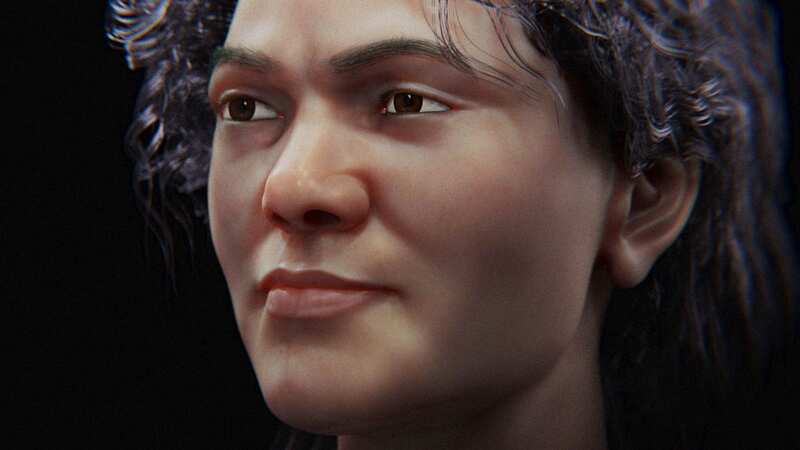Face of 'oldest human' ever revealed with photo of a woman from 45,000 years ago

The face of the "oldest human" to walk the Earth has been revealed by scientists who unveiled photos of a woman who lived 45,000 years ago.
An international team of academics from Brazil, Australia and Italy used genetic information from a woman's skull named Zlaty kun (golden horse in Czech), which they unearthed at a site near Prague more than 70 years ago. The fossilised remains are just a portion of the skull, as researchers believe she was eaten by an animal after she died.
The team did not have direct access to the ancient skull, but they used the recorded measurements and reference images to create the remarkable picture. The team believes Zlaty was part of one of the first Homo sapiens to live in Eurasia – after modern humans left Africa around 50,000 years ago.
Her genome makeup carried about three percent Neanderthal ancestry and her group had much larger brains than early humans that emerged from ape-like ancestors.
 Photo shows the Zlaty kun skull (Martin Frouz via Pen News)
Photo shows the Zlaty kun skull (Martin Frouz via Pen News)Her existence predates the lives of the populations that gave rise to present-day European and Asian lineages which split around 41,000 years ago. Study co-author Cícero Moraes, a Brazilian graphics expert, told Live Science the statistical data was used with two CT scans of a modern man and woman, resulting in the digital face.
 2,000-year-old Mayan cities, towns and villages found hiding beneath rainforest
2,000-year-old Mayan cities, towns and villages found hiding beneath rainforest
He said: "When archaeologists found the skull, the first experts who analysed it thought it was a man, and it's easy to understand why, in addition to the skull having characteristics that are very compatible with the male sex of current populations,' which include a 'robust' jaw. We see that the jaw structure of Zlatý kůň tends to be more compatible with Neanderthals."
What is also interesting is that the woman belonged to a population that did not leave genetic descendants and they became extinct nearly 40,000 years ago. One explanation for this is a massive volcanic event in Italy – known as the Campanian Ignimbrite eruption – may have affected the climate in the northern hemisphere and reduced the survival chances of Neanderthals and early modern humans in large parts of Europe.
Johannes Krause, senior author of the study and director at the Max Planck Institute for Evolutionary Anthropology: "It is quite intriguing that the earliest modern humans in Europe ultimately didn’t succeed. Zlaty kun shows no genetic continuity with modern humans that lived in Europe 40,000 years ago."
Moraes told Live Science that initial grey-scaled images allowed them to generate more objective and scientific shots of the ancient woman's face, allowing them to then add colour, hair and fur. The result was a lifelike image of a woman with dark, curly hair and brown eyes. He said: "We looked for elements that could compose the visual structure of the face only at a speculative level since no data was provided on what would be the colour of the skin, hair and eyes."
Read more similar news:
Comments:
comments powered by Disqus

































